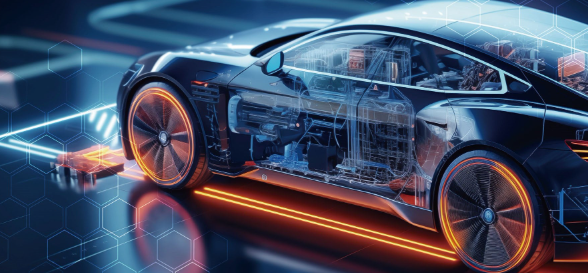From Mechanical Marvel to Software-Defined Machines: The Shift Toward Zonal Architecture in Modern Vehicles

Thirty years ago, the automobile was a marvel of mechanical engineering—but by today’s standards, it was remarkably basic. Entry-level vehicles featured little more than a radio and electronic ignition as their sole electronic components. Windows were manually operated, dashboards housed simple electromechanical speedometers and a handful of warning lights, and power was routed directly from the battery to headlights via mechanical switches. There were no ABS systems, airbags, or centralized computing—everything was analog and functionally isolated.
Today, vehicles are equipped with hundreds of electronic features, many of which are mandated by regulation or demanded by consumers. To implement these capabilities, automakers have historically relied on Electronic Control Units (ECUs). Each system—braking, lighting, infotainment, and more—has had its own ECU, software, and wiring. Over time, this has led to complex, distributed architectures, with more than 100 to 150 ECUs per vehicle, forming an intricate web of interconnected systems.
The Rise of the Software-Defined Vehicle (SDV)
To manage this increasing complexity, the automotive industry is shifting toward the Software-Defined Vehicle (SDV) architecture. SDVs aim to centralize software control, making it easier to manage updates, enable new features, and scale functionality. However, this transformation faces a physical constraint: unless automakers also rethink the vehicle’s underlying hardware and wiring layout, the full potential of SDVs may remain out of reach.
Introducing Zonal Architecture
This is where zonal architecture comes into play—a modern, location-based design philosophy that complements the SDV model and significantly reduces physical complexity.
Rather than organizing electronics by function, zonal architecture groups them by location. Each vehicle zone—such as the front-left corner, rear-right quarter, or cabin—is managed by a zonal controller. These controllers handle all the local devices in their area, such as lights, switches, and sensors. Instead of each device running its own software stack, zonal controllers act as smart hubs for power distribution and data communication.
These zonal units are connected to a central compute platform that runs the core software defining vehicle behavior. Tasks like central locking, lighting, or HVAC control are managed centrally, with zonal controllers executing commands.
This dramatically simplifies the wiring—from a sprawling point-to-point network to a streamlined zonal layout—which improves system clarity, reduces weight, and enhances overall efficiency.
Practical Challenges in Zonal Implementation
While the benefits of zonal architecture are clear, implementation isn't without challenges. Not all edge components can be completely stripped of intelligence. For instance, advanced lighting systems may still require local processing to meet performance, safety, or proprietary requirements.
Tier-1 suppliers often embed their own software into such modules, as they possess the domain expertise to manage their behavior. This creates a core dilemma for SDV adoption: how to balance centralized control with local autonomy. In practice, OEMs typically manage central software, while Tier-1s maintain embedded software within their components. A purely centralized, software-driven vehicle is the goal—but it often requires compromises.
The Role of Automotive Ethernet
Traditional vehicle networks have used CAN and LIN protocols, which are well-suited for isolated systems. But as zonal architectures scale, these legacy technologies become increasingly cumbersome.
Enter Automotive Ethernet, and specifically 10BASE-T1S, a low-speed (10 Mbps) multi-drop Ethernet standard tailored for automotive use. 10BASE-T1S enables multiple nodes—like headlights, turn signals, and door locks—to share a single twisted-pair cable, eliminating the need for costly point-to-point wiring.
By significantly reducing harness complexity while supporting modern data requirements, 10BASE-T1S is a key enabler of scalable, cost-effective zonal architectures.
